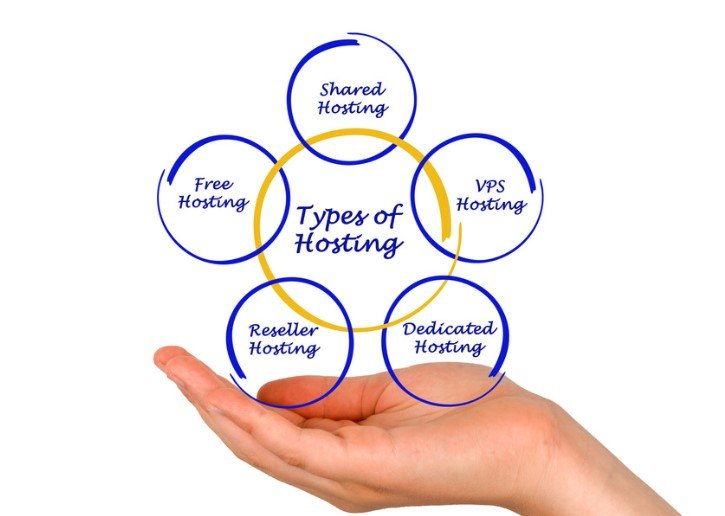Running a WordPress website that attracts heavy traffic is both exciting and challenging. While more visitors usually mean more sales, sign-ups, or ad revenue, it also creates serious pressure on the server. If the hosting environment is not built to handle thousands of users at once, websites often experience downtime, slow loading speeds, or even complete crashes. These issues not only frustrate visitors but also damage SEO rankings, brand reputation, and business revenue.
That is why choosing the right hosting type becomes critical. Every website owner must understand which hosting service is capable of handling high traffic without interruptions. In this article, we will explore the common hosting types and analyze whether they are suitable for high-traffic WordPress sites.
Types of Web Hosting
Web hosting comes in several forms, each designed for a different purpose. Small personal blogs and professional eCommerce stores cannot survive on the same hosting environment. Understanding the differences will help you select the best option for scaling your WordPress site smoothly and ensuring near-zero downtime.
Shared Hosting
Shared hosting is the most affordable and beginner-friendly option. In this setup, multiple websites share the same server resources, such as bandwidth, CPU power, and memory. For small websites with low daily visitors, this arrangement works fine. However, when your site starts receiving thousands of visitors per day, shared hosting often becomes a bottleneck.
Traffic spikes can slow down the website significantly because all hosted sites are pulling resources from the same server. In worst cases, the site can go completely offline. Hosting providers usually put strict limitations on shared hosting accounts, which makes it unsuitable for high-traffic WordPress sites. If your goal is to avoid downtime, shared hosting should only be seen as a temporary starting point.
Dedicated Hosting
Dedicated hosting, on the other hand, offers an entire physical server exclusively for your website. Unlike shared hosting, you don’t have to compete with other websites for resources. This results in superior performance, faster loading speeds, and much greater stability during high traffic surges.
Dedicated hosting is considered one of the most reliable solutions for high-traffic WordPress sites because it guarantees maximum uptime and eliminates resource restrictions. It also provides advanced customization options where you can configure the server exactly to your site’s needs. However, it is more expensive compared to shared hosting and requires some technical knowledge to manage efficiently. For businesses that value reliability and cannot afford downtime—such as eCommerce stores, news portals, or educational platforms—dedicated hosting is a wise investment.
Virtual Private Server (VPS) Hosting
VPS hosting bridges the gap between shared hosting and dedicated servers. Instead of sharing resources with hundreds of websites, your site gets its own allocated portion of a powerful server. This means more stability, stronger performance, and significantly reduced chances of downtime during traffic spikes.
A VPS environment provides dedicated CPU, RAM, and storage resources that aren’t influenced by what other users are doing. This ensures that your website remains fast and responsive even when your traffic volume increases suddenly, such as during product launches or seasonal sales. VPS hosting also allows for better customization and control, giving you the ability to install advanced caching, security tools, or even custom server configurations that specifically optimize WordPress.
For businesses that are not ready to invest in a full dedicated server but require more reliability than shared hosting, VPS offers the perfect balance of affordability and performance.
Cloud Hosting
Cloud hosting has revolutionized the way websites handle large volumes of traffic. Instead of depending on a single physical server, cloud hosting distributes your website’s data and resources across multiple connected servers. This architecture ensures that if one server fails, another one immediately takes over, keeping your site online without interruptions.
For WordPress sites, cloud hosting offers unmatched scalability. During high-traffic events, such as viral content or flash sales, additional resources can be automatically added to support the surge in visitors. Once the demand slows down, those extra resources scale back, so you only pay for what you use. This flexibility makes cloud hosting extremely cost-effective compared to traditional solutions.
In addition to uptime benefits, cloud hosting providers often include built-in redundancy, global content delivery networks (CDNs), and robust security features. Together, these ensure your site not only stays live but also loads quickly from anywhere in the world, which is crucial for SEO and user satisfaction.
Managed WordPress Hosting
Managed WordPress hosting is designed specifically for WordPress users who want speed, reliability, and convenience. With this hosting type, the provider takes care of all the technical aspects of running WordPress, including updates, security monitoring, performance optimization, and daily backups. This hands-off approach allows website owners to focus entirely on content and business growth while leaving server management to experts.
The major advantage of managed WordPress hosting for high-traffic sites is performance. Providers use servers optimized exclusively for WordPress, often with built-in caching, staging environments, and advanced resource management. As a result, even during peak traffic periods, your site remains fast and stable. Many managed hosts also offer guaranteed uptime percentages above 99.9%, ensuring that downtime is virtually eliminated.
Although managed hosting tends to be more expensive than VPS or entry-level cloud solutions, the investment pays off for businesses that cannot afford the risks of poor performance or site crashes. For eCommerce stores, media websites, or growing startups, managed WordPress hosting delivers both peace of mind and superior user experience.
Key Factors to Consider When Choosing the Right Web Host for High-Traffic WordPress Sites
Running a high-traffic WordPress site is both exciting and challenging. The more visitors you attract, the more pressure it puts on your hosting environment. A slow or unstable server can easily ruin the user experience, push visitors away, and even damage your SEO rankings. This is why choosing the right hosting provider is critical if you want to maintain smooth performance and eliminate downtime. Below are the essential factors you should evaluate before selecting a web host for a high-traffic WordPress website.
Performance and Speed
The first and most important consideration is performance. A high-traffic site cannot afford to load slowly, as even a few extra seconds of delay can increase bounce rates dramatically. Hosting providers that specialize in WordPress optimization usually offer features such as SSD or NVMe storage, advanced caching mechanisms, and server-level optimizations tailored for WordPress. A good provider will also have data centers in multiple locations, ensuring that your content is delivered quickly to users worldwide.
Google also considers site speed as a ranking factor, meaning that faster sites perform better in search results. Therefore, you need to look beyond just “cheap hosting” and focus on whether the infrastructure is built for speed and heavy workloads.
Network Capacity and Bandwidth
Traffic spikes can happen at any moment—whether you publish viral content, launch a new product, or run a marketing campaign. Without sufficient network capacity and bandwidth, your site could easily crash under the pressure. A host that offers unmetered or high-bandwidth plans ensures that your site can handle sudden surges in visitors.
It is also important to check if the host uses premium networks and reliable peering arrangements. This ensures that data travels efficiently between your server and your visitors, reducing latency. For businesses targeting a global audience, content delivery networks (CDNs) can further improve network performance and reduce the strain on your origin server.
Scalability
A high-traffic WordPress site today may grow even bigger tomorrow. Your hosting plan should therefore allow seamless scalability without forcing you to migrate to a completely new environment. Cloud hosting and managed WordPress hosting providers often offer auto-scaling features that allocate more resources whenever demand rises.
For example, if your site experiences a sudden influx of visitors during a holiday sale, scalability ensures that the server adapts instantly, preventing downtime. The ability to scale up and down as needed also saves money, as you only pay for the resources you actually use.
Uptime Guarantee
Downtime is one of the biggest threats to any online business. A site that goes offline not only frustrates visitors but also damages brand reputation and revenue. Most reliable hosting providers advertise an uptime guarantee, usually 99.9% or higher. This guarantee means that your site will be available nearly all the time, with only a few minutes of downtime per month.
Before choosing a provider, it’s wise to check their historical uptime record, not just the advertised guarantee. Independent reviews and uptime monitoring tools can give you a clearer picture of whether the provider delivers on their promises. Remember: for high-traffic websites, even a few minutes of downtime during peak hours can mean thousands of lost visitors.
Security Features
As traffic grows, so does the risk of cyberattacks. High-traffic WordPress sites are prime targets for hackers, spammers, and bots. This is why strong security features should be at the core of your hosting decision. A secure host should provide firewalls, malware scanning, SSL certificates, DDoS protection, and regular automated backups.
Additionally, managed WordPress hosting providers often include features such as automatic updates for WordPress core, plugins, and themes. This minimizes vulnerabilities and reduces the chance of your site being compromised. In today’s digital landscape, security is not optional—it is a necessity for maintaining uptime and protecting your visitors’ trust.
Support for WordPress
Not every hosting provider is fully optimized for WordPress. High-traffic sites need a host that specializes in this CMS. Look for providers that offer features like automatic updates, PHP optimization, staging environments, built-in caching, and one-click installations. Managed WordPress hosting solutions often take care of server optimization, backups, and security, which means you can focus on your content and growth instead of troubleshooting server errors. A WordPress-focused host understands the unique requirements of plugins, themes, and databases, and ensures your website remains stable even during sudden spikes in visitors.
Cost and Value
When it comes to high traffic hosting, the cheapest option is rarely the best. Low-cost shared hosting may collapse under heavy loads, leading to downtime and frustrated users. Instead, evaluate cost in terms of value. Reliable hosting plans may seem expensive at first, but they protect your revenue by guaranteeing uptime, fast loading speeds, and expert support. Think of hosting as an investment — spending more upfront often saves money in the long run by preventing lost sales, damaged SEO rankings, and poor customer experiences. Compare providers not just on price, but on scalability, resources, and uptime guarantees.
Customer Reviews and Reputation
One of the best ways to assess hosting quality is to look at customer reviews and the company’s reputation in the industry. Search for independent feedback on performance, support, and uptime reliability. High traffic WordPress hosting is a competitive space, and providers with a strong track record usually have case studies, testimonials, or third-party ratings to prove their reliability. Avoid hosts with frequent complaints about downtime or unresponsive support. A good reputation is a strong indicator that the hosting company delivers on its promises.
Optimize Images
Even with powerful hosting, a poorly optimized site can slow down and increase server load. Images are one of the biggest culprits behind slow performance. High traffic websites should always compress and resize images without compromising quality. Tools like TinyPNG, ShortPixel, or built-in WordPress plugins can automate optimization. Using next-gen formats like WebP can reduce file sizes further. Optimized images improve loading times, reduce bandwidth usage, and allow your hosting environment to handle more visitors efficiently.
Use Lightweight Themes
A bloated theme filled with unnecessary features can drag down performance and increase the risk of downtime when traffic spikes. For high traffic websites, it’s important to select a lightweight, fast, and well-coded WordPress theme. Popular frameworks like GeneratePress, Astra, or Kadence are built for speed and scalability. A minimalistic, optimized theme ensures that your hosting resources are used efficiently, helping you maintain stability even when thousands of visitors are browsing your site simultaneously.
Minify and Combine CSS and JavaScript
Speed and performance are crucial for uptime. Excessive CSS and JavaScript files slow down a site and increase server requests, especially under heavy load. By minifying and combining these files, you reduce the total number of requests and file sizes, which improves loading times. Many caching plugins, such as WP Rocket or Autoptimize, can handle this process automatically. Faster sites are less likely to crash under pressure, meaning optimization directly contributes to preventing downtime.
Monitor and Analyze Performance
Reliable hosting alone is not enough; you need to constantly monitor performance. Using tools like Google PageSpeed Insights, GTmetrix, or server monitoring dashboards helps you identify bottlenecks before they cause downtime. Monitoring ensures you know how your site performs during peak hours, how fast pages load, and whether server resources are being stretched too thin. Analytics also help you plan future upgrades. A proactive approach to performance monitoring is the best way to ensure uninterrupted uptime for high traffic WordPress sites.
Performance Optimization Tips for High-Traffic WordPress Sites
Optimize Images
Images are often the heaviest elements on a website. If they are not properly compressed, they can slow down your pages significantly. High-traffic sites cannot afford delays because every second counts when hundreds or thousands of users are browsing at the same time. By using modern formats such as WebP and lossless compression tools, you can reduce file sizes without sacrificing quality. A well-optimized image library keeps server resources free and helps the site load faster.
Use Lightweight Themes
Themes determine how much code your website loads. Heavy themes with excessive scripts and animations may look attractive but they can slow down performance dramatically during traffic spikes. A lightweight theme designed with clean code ensures your site uses fewer resources, making it easier for your hosting server to handle high visitor volumes. Minimalist and speed-focused themes often deliver better stability and reduce the chances of downtime caused by overloaded servers.
Minify and Combine CSS and JavaScript
Every CSS and JavaScript file adds an extra request to the server. When thousands of users load your site simultaneously, these requests can pile up and cause bottlenecks. By minifying and combining these files, you remove unnecessary spaces, comments, and duplicates, which results in smaller file sizes. This not only reduces server strain but also accelerates the loading process for end users. Tools like Autoptimize or built-in hosting features can manage this automatically for high-traffic environments.
Monitor and Analyze Performance
Even with the best hosting, monitoring is critical to ensure uptime. Performance monitoring tools allow you to track response times, server load, and unusual traffic patterns. By analyzing this data, you can anticipate issues before they escalate into downtime. Monitoring also helps identify which pages or plugins are consuming the most resources, so you can take corrective measures. A proactive approach to performance analysis ensures your WordPress site remains stable under pressure.
Summary
High traffic WordPress hosting without downtime is more than just a marketing promise; it is the foundation of online success. By selecting a reliable provider with guaranteed uptime, scalable resources, CDN integration, and WordPress optimization, businesses can safeguard against losses and ensure a smooth user experience. Ultimately, the right hosting choice pays for itself by protecting revenue, reputation, and search engine rankings.
FAQs
Q1. What is the best hosting for high traffic WordPress sites?
Managed WordPress hosting and cloud hosting are usually the best choices for high traffic sites due to scalability and performance.
Q2. How much traffic can shared hosting handle?
Shared hosting struggles after a few thousand monthly visits and is not suitable for high traffic websites.
Q3. How can I prevent downtime on my WordPress site?
Choose a reliable host, enable caching and CDN, keep WordPress updated, and monitor uptime with performance tools.
Q4. Is cloud hosting better than VPS for WordPress?
Yes, for most high traffic scenarios, cloud hosting is better because of scalability, while VPS is fixed and may fail during heavy surges.



